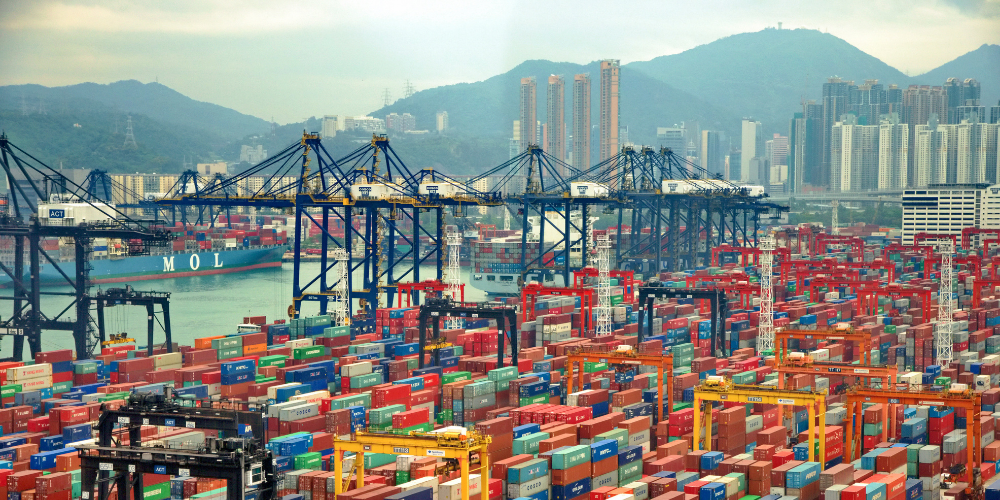
Congestion in the key Chinese ports of Shenzhen and Hong Kong due to Covid-19 lockdowns has risen to the highest level in five months, with about 174 vessels anchored or loading off the hubs.
The delays come as China has imposed the strictest Covid-19 controls since the outbreak two years ago.
Shanghai, the biggest port in the world, also has ships queuing to unload, reports Bloomberg.
Technology hub Shenzhen is lifting a week-long Covid-19 lockdown after ordering factories to shut and truckers to test for the virus, reports Q Captain.
Peak season
Lloyds List reports that the congestion comes as cargo owners and carriers are prepared to kick off the main season for shipping produce between April and July.
“This time of the year is crucial for most companies as they begin to ship fresh production in preparation of the early peak season,” Container xChange said in a report. “Lockdowns in China will not just be a production slowdown, but also a slowdown of cargo movement, both being detrimental to the supply chain.”
The congestion level at Shenzhen and Hong Kong ports has increased sharply in recent days.
This week, the number of box ships at anchor off the two ports has risen to 113, up from 88.
US labour
Supply chain disruption is also predicted in the US where shippers are moving cargo to the US east coast in anticipation of port labour negotiations on the west coast, reports Lloyds List.
Flexport comments that the existing contract governing union labour at west coast ports expires on July 1 and the latest triennial negotiations could be more complex than those in 2019.
The current contract between the International Longshore and Warehouse Union (ILWU) and employer group Pacific Maritime Association (PMA) is expected to focus on points such as agreement on compensation and port automation, against a backdrop of Covid-19 and extreme demand for throughput.
European disruption builds
Congestion at North Europe’s container ports is also on the rise again, causing carriers to change their schedules and restrict import and export operations at terminals, reports the Loadstar.
Vessels are arriving already delayed by supply chain disruptions in China, and with sanctioned Russian cargo remaining on board.
Maersk said today it was facing “critical yard density levels” at its Bremerhaven NTB terminal, adding: “This situation slows down the terminal operations, which will further delay our vessel arrival and departure schedules.
Main container hubs are suffering from terminal and landside congestion, attributed to the bunching of ultra large container vessels (ULCVs) and quaysides becoming overwhelmed with containers that have been omitted from schedules.
Russian cargo
The container industry needs to come up with a way of handle Russian cargos to avoid bringing operations to a halt, reports Ship & Bunker.
Russian containers on ships may be on top of other containers that need to be accessed. Handlers have to work out “whether to leave the cargo in the port or to handle the container again and re-load it onto the vessel to send it back to origin”, said shipping expert Lars Jensen.



